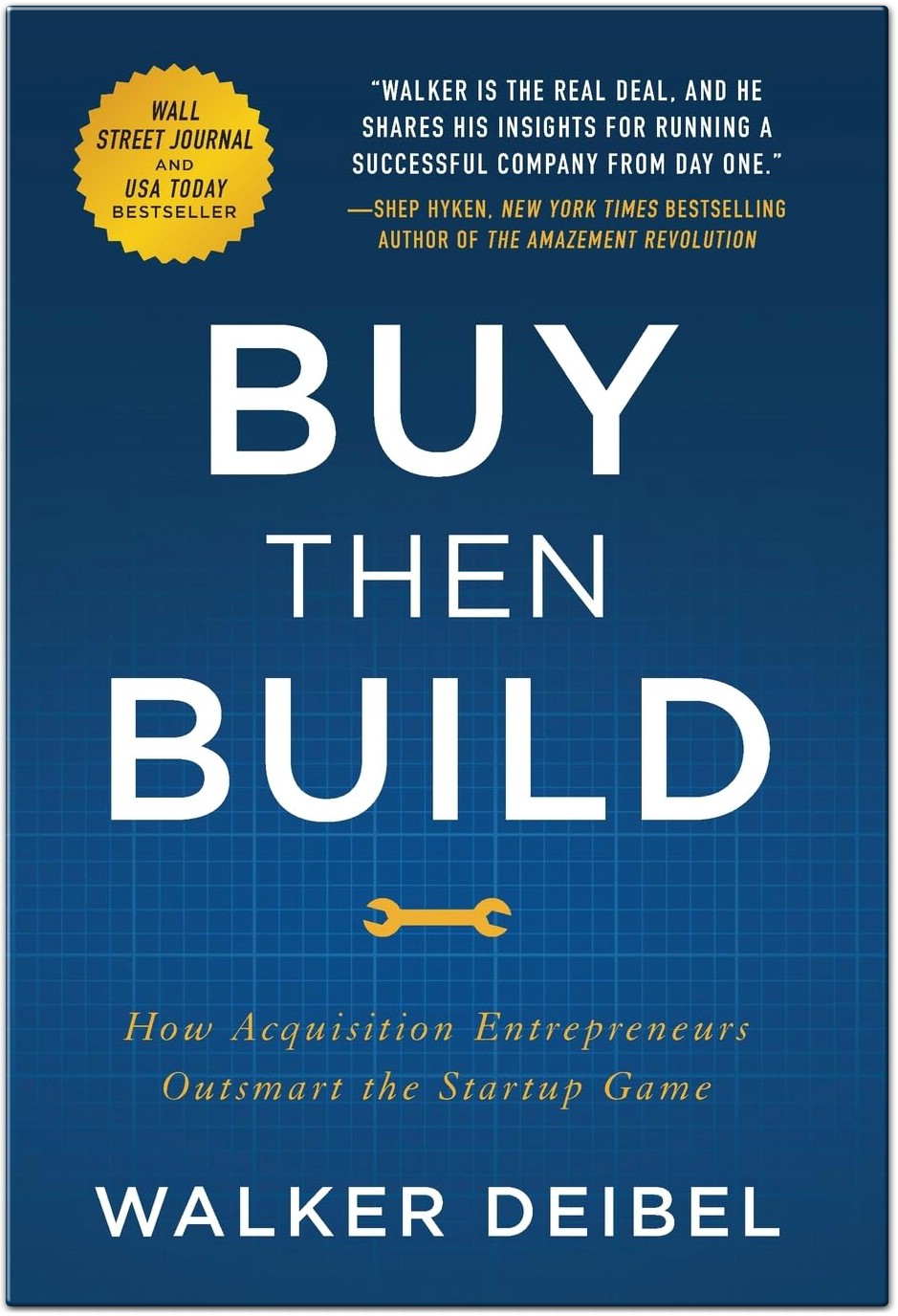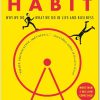
Buy Then build Book Summary: How Acquisition Entrepreneurs Outsmart the Startup Game by Walker Deibel aims to empower readers to adopt an entrepreneurial mindset, circumvent the conventional startup paradigm, and reap instant financial benefits through ownership. According to Deibel’s paradigm, acquisition entrepreneurship may provide significant financial advantages while reducing the risks of starting a business.
This book provides a roadmap for entrepreneurs to build a million-dollar business in 12 months, sharing strategies and mindset required for success.
Book Summary Contents
- 1 Key findings
- 2 How Acquisition Entrepreneurs Outsmart the Startup Game: Key Insights from Buy Then Build
- 3 Buy Then Build: How Acquisition Entrepreneurs Outsmart the Startup Game by Walker Deibel Table Of Contents
- 4 Buy Then build Book Summary
- 5 Buy Then Build: How Acquisition Entrepreneurs Outsmart the Startup Game by Walker Deibel Book Details
- 6 About The Author Walker Deibel
- 7 Get Your Copy: Buy Then Build: How Acquisition Entrepreneurs Outsmart the Startup Game by Walker Deibel
Key findings
- The book shares the author’s challenges and the knowledge of successful entrepreneurs who have built million-dollar businesses.
- The author achieved a million-dollar business in six months and felt unhappy and uncertain about what to do next.
- If you casually go down this road, and you commit to the plan within these pages, you may very well find yourself quickly responsible for a million-dollar business
- “Ryan,” he said, “if I worked for my entire career, and never spent any of the money I ever made, I would have about a million dollars.”
- I mentioned this earlier when I told the story of my dinner with Tim Ferriss
How Acquisition Entrepreneurs Outsmart the Startup Game: Key Insights from Buy Then Build
Starting a business without the right mindset will consume your days, destroy your work-life balance, and make you question what the hell you’re doing on a moment-to-moment basis. You’ll doubt yourself in ways you didn’t know possible.
Wake up in your bed tomorrow, enjoy your breakfast, and be thankful there are crazy people in the world who will give up everything to bleed over their businesses in pursuit of success. But if you know—if you’re 100 percent certain—that you’re one of those crazy people . . . strap in. By turning the page, you’re committing to the process of building something great. If you follow this roadmap, there’s a good chance that you will have a million-dollar business one year from now. This is your epic adventure, and your journey begins now.
Entrepreneurs often face a significant challenge with startups. The reality is that nearly all startups either fail or fail to achieve sustainable growth. Despite the widespread appeal of entrepreneurship, a more effective method for launching a successful business has been elusive—until now.
Imagine beginning with a business that is already lucrative on day one, skipping the startup process entirely. Acquisition entrepreneur Walker Deibel presents a ground-breaking method of starting a business in his book BUY THEN BUILD. Deibel offers to buy an already-existing firm as an alternative to beginning a new venture from the ground up. With this approach, you may start with an established firm making money immediately, avoiding the first obstacles.
In Buy Then Build: How Acquisition Entrepreneurs Outsmart the Startup Game, you’ll learn how to purchase an existing business rather than build one from the ground up. Deibel explains how to use business ownership as a path to financial independence, significantly reduce the time spent raising capital, and find top brokers and deal opportunities early. The book also provides insights into evaluating potential acquisitions, understanding the risks and opportunities of various companies, and navigating the acquisition process effectively.
Buy Then Build: How Acquisition Entrepreneurs Outsmart the Startup Game by Walker Deibel Table Of Contents
PART 1: OPPORTUNITY
Chapter 1: Don’t Start a Business
Chapter 2: Engineering Wealth
PART 2: EVALUATION
Chapter 3: The CEO Mindset
Chapter 4: Defining the Target
Chapter 5: The Search
PART 3: ANALYSIS
Chapter 6: Deal Making
Chapter 7: Buy for the Future, Pay for the Past
Chapter 8: The Seller’s Journey
Chapter 9: Designing the Future
PART 4: EXECUTION
Chapter 10: Making an Offer
Chapter 11: The Acquisition Phase
Chapter 12: Transition
CONCLUSIONS
Acquisition in the Entrepreneurship Economy
Bibliography
Acknowledgments
About the Author
Buy Then build Book Summary
PART 1: OPPORTUNITY
Chapter 1: Don’t Start a Business
The chapter emphasizes that starting a business is fraught with risk and a high likelihood of failure, even for those with strong teams and promising products. The author shares a personal experience of a failed startup, highlighting that the majority of startups either fail or struggle to achieve significant success.
Instead of starting a new venture, the author introduces the concept of acquisition entrepreneurship as a more reliable path to building a successful business from day one.
Chapter 2: Engineering Wealth
This chapter discusses the connection between business ownership and wealth creation. It cites statistics showing that a significant percentage of millionaires own their businesses. The author argues that acquisition entrepreneurship can serve as an effective investment strategy, combining the roles of entrepreneur and investor.
Key principles of investment, such as return on investment, margin of safety, and upside potential, are outlined as crucial for evaluating potential acquisitions. The chapter encourages readers to view business ownership as a viable route to building lasting wealth.
PART 2: EVALUATION
Chapter 3: The CEO Mindset
Successful acquisition entrepreneurs begin their search for a company to acquire by focusing on their strengths and mindset rather than immediately targeting specific industries. The author emphasizes the importance of aligning one’s attitude, aptitude, and action—referred to as the “3 As”—to ensure a successful acquisition process.
A growth mindset is highlighted as a critical characteristic, enabling entrepreneurs to embrace challenges, learn from failures, and adapt. Cultivating this mindset allows for better decision-making and leadership as they transition into running a business.
Chapter 4: Defining the Target
This chapter builds on the self-assessment from the previous chapter and focuses on creating a clear target profile for potential acquisitions. It emphasizes the need to define what type of business aligns with the entrepreneur’s strengths, preferences, and goals.
The author outlines four main opportunity profiles—such as “eternally profitable” businesses—that potential buyers can consider based on their risk tolerance and strategic vision. A personalized target statement is introduced as a tool to communicate specific acquisition goals effectively, guiding the search process to find a business that fits the entrepreneur’s unique criteria.
Chapter 5: The Search
This chapter focuses on effective strategies for finding acquisition opportunities in the business landscape. It critiques the common approach of starting with online listings, arguing that this method often leads to wasted time and a lack of quality leads.
Instead, the author advocates for a proactive and organized search strategy that involves engaging directly with brokers, intermediaries, and business networks to access better opportunities.
Buy Then Build: How Acquisition Entrepreneurs Outsmart the Startup Game Key points include:
- Mindset: Approaching the search with a serious, committed attitude, treating it as a job rather than a passive activity.
- Organizing Information: Keeping detailed records of potential businesses and their characteristics to aid in decision-making.
- Networking: Building relationships with brokers and intermediaries to tap into deal flow before opportunities are publicly listed. The best deals often don’t make it to online marketplaces because they are sold through personal connections.
- Specificity: Identifying target businesses that align with personal strengths and goals, rather than relying solely on generic listings.
PART 3: ANALYSIS
Chapter 6: Deal Making
This chapter focuses on the intricate process of bringing together the various elements necessary for acquiring a business. Key points include:
- Preparation is Key: Emphasizes the importance of thorough preparation in the acquisition process, setting you apart from other buyers.
- Team Dynamics: Highlights the need to effectively manage relationships with banks, brokers, sellers, and potential partners.
- Leverage: Discusses the strategic use of debt in acquisitions. While high leverage can maximize ROI, it also increases risk. Balancing debt and equity is crucial.
- Banker Outreach: Advises on early engagement with banks to understand lending options. Building relationships with bankers is essential for securing financing when the right opportunity arises.
- Networking: Stresses the importance of networking to find the right bank and other key players, as well as gaining insights into potential sellers.
- Interest Rates and Terms: Suggests keeping multiple banks in the loop to secure competitive financing terms.
- SBA Loans: Discusses the advantages of seeking SBA-backed loans and the benefits of working with banks that have dedicated SBA lenders.
Chapter 7: Buy for the Future, Pay for the Past
This chapter delves into the financial evaluation of a potential acquisition:
- Understanding Financials: Emphasizes the need to analyze past financial performance through Offering Memorandums (OMs) that provide key information about a business.
- Valuation Perspective: Stresses that you pay for a company based on its past performance while focusing on future growth potential.
- Financial Literacy: While accounting knowledge is important, the chapter reassures readers that they don’t need to be experts but should rely on professionals for assistance.
- Due Diligence: Encourages assuming the accuracy of the initial financial information but highlights the importance of validating this during due diligence.
- Importance of Team: Reiterates the necessity of having a good team, including accountants and advisors, to help navigate the complexities of financial evaluations.
- Emphasizes the principle of valuing a business based on its future potential rather than just its historical performance.
Chapter 8: The Seller’s Journey
- Understanding Seller’s Perspective:
- Sellers often have a deep emotional connection to their businesses. Their identities and livelihoods are intertwined with the success of the company.
- Buyers should recognize this emotional aspect to build rapport and trust.
- Approach to Buyer-Seller Interaction:
- New buyers often approach meetings with skepticism, assuming the seller is trying to unload a failing business. Instead, buyers should act like entrepreneurs, showing enthusiasm and readiness to lead.
- The goal is to convince the seller that the buyer is the right fit, focusing on three main aspects:
- Ability to close the deal.
- Competence and passion for the business.
- Trustworthiness and problem-solving mindset.
- Building Rapport:
- Establishing a good relationship with both the seller and the intermediary can lead to better outcomes and valuable insights about the business.
- Approach the first meeting like an interview for a CEO position, showcasing commitment, relevant background, and genuine interest in the seller’s business.
- The Importance of Emotional Comfort:
- Sellers need to feel comfortable sharing confidential information. Building trust early on is crucial for effective communication and negotiation.
- Negotiation Styles:
- The chapter emphasizes that being friendly and collaborative does not weaken one’s negotiating position. A problem-solving attitude can lead to better deals.
Chapter 9: Designing the Future
- Dreaming Big:
- Acquisition entrepreneurs aim to build value in their companies by identifying promising acquisitions and executing strategic plans.
- Industry and Business Model Understanding:
- Assessing the broader industry landscape and the specific position of the target company is essential.
- Recognizing that differentiation, rather than uniqueness, is often what sets a company apart in the marketplace.
- Porter’s Five Forces Framework:
- This model helps analyze the competitive landscape by examining:
- Threat of New Entrants: Barriers to entry that protect established businesses.
- Threat of Substitutes: Alternatives that customers might consider.
- Buyer Power: The influence customers have over pricing.
- Supplier Power: The leverage suppliers hold over businesses.
- Industry Rivalry: The intensity of competition among existing players.
- This model helps analyze the competitive landscape by examining:
- Applying the Forces:
- By evaluating these forces, buyers can assess the attractiveness of a business and identify risks.
- Understanding where the industry stands in its lifecycle can also inform acquisition strategies and potential growth areas.
PART 4: EXECUTION
Chapter 10: Making an Offer
Chapter 10’s primary goal is to walk potential purchasers through the process of submitting a Letter of Intent (LOI), which is the first bid to purchase a firm. The LOI is a high-level, non-binding agreement that describes the essential components of the proposed transaction, including the acquisition type (stock sale vs. asset purchase), price, terms, and closing date.
This chapter highlights this point. Before moving on with comprehensive agreements, the LOI helps the buyer and seller come to an understanding of each other and sets the basis for talks. The chapter emphasizes how crucial it is to grasp the terms and conditions of the contract and act swiftly to convey the purpose.
It also emphasizes the distinction between a stock sale—which is less usual but occasionally required for certain contracts or licenses—and an asset sale, which is customary and shields the buyer from past responsibilities. Finally, the chapter offers guidance on how to calculate the purchase price, which includes evaluating negative risks with a stress test.
Chapter 11: The Acquisition Phase
Chapter 12: Transition
The primary objective of Chapter 12, “Transition,” is to assist acquisition entrepreneurs in navigating the critical stage of concluding a firm acquisition and effectively assuming the job of the new CEO. The necessity of planning, controlling last-minute worries (the “Eleventh Hour Freakout”), and doing due diligence is emphasized throughout the chapter.
It outlines the steps needed in closing, such as signing contracts, completing the necessary copious amounts of paperwork, and settling inventory and finances. It also provides methods for the first ninety days following purchase, emphasizing the development of relationships with staff, clients, and suppliers, as well as leadership and operational knowledge.
To achieve a seamless and effective takeover, the chapter emphasizes the significance of being thorough and deliberate during the transition time.
Buy Then Build: How Acquisition Entrepreneurs Outsmart the Startup Game by Walker Deibel Book Details
| Attribute | Details |
|---|---|
| Publisher | Lioncrest Publishing (September 1, 2022) |
| Language | English |
| Hardcover | 310 pages |
| ISBN-10 | 154453566X |
| ISBN-13 | 978-1544535661 |
| Item Weight | 2.31 pounds |
| Dimensions | 5.5 x 0.81 x 8.5 inches |
About The Author Walker Deibel

Walker Deibel is a seasoned entrepreneur and investor with a remarkable track record, having co-founded three startups and acquired seven companies. With experience in over 100 business transactions, he has established himself as a leading figure in the acquisition entrepreneurship space.
Following the success of his book Buy Then Build: How Acquisition Entrepreneurs Outsmart the Startup Game, he launched the Acquisition Lab, an elite accelerator designed to provide aspiring business buyers with a top-tier education and a supportive community.
Walker earned his MBA from the Olin School of Business at Washington University in St. Louis, where he received the Declaration of Accomplishment in Entrepreneurship from the Skandalaris Center for Innovation and Entrepreneurship. He later introduced an Acquisition Entrepreneurship course as an adjunct professor.
In addition to his entrepreneurial ventures, Walker collaborates with Quiet Light, assisting online entrepreneurs with their exit strategies. He holds multiple certifications, including Certified M&A Advisor (CM&AP), M&AMI, and CEPA, and is a former SEC-licensed stockbroker.
His contributions to the field earned him the Thought Leader of the Year award from the Alliance of M&A Advisors, recognizing his influence through Buy Then Build and its integration into academic programs.
Walker’s insights have been featured in prominent publications such as Forbes, Entrepreneur, Inc., Fast Company, and Harvard Business Review. He resides in St. Louis, Missouri.



































